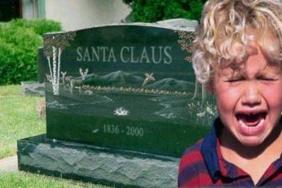Before you read further I want you to know that I am not wishing Santa an untimely demise. Instead, I am asking about his future in light of cultural headwinds. The more I think about the Santa Claus issue the more I wonder if Santa Claus is not going to have difficulty moving forward. In Chris Altrock’s book, “Preaching to Pluralists” he lays out seven characteristics of postmoderns:
- Uninformed about Christian basics
- Interested in spiritual matters
- Anti-institutional
- Pluralistic
- Pragmatic
- Relational
- Experiential
Santa may have a hard time making the cut with this group. How are you relational with a guy who isn’t real? How practical is jolly old saint Nick? What is more, postmoderns are pluralistic, that means they are open to relativism and less inclined to believe in absolute truths or that one way is the best way over other options. That means they don’t buy into things as a package deal. Instead they pick and choose what is practical (See #4 above). Santa could feel like a relic of a bygone age to many of them who grew up in less than happy, healthy homes.
Besides culture, there is another obstacle to Santa that many postmoderns face. That is the idea of their parents not being transparent and authentic when it came to Santa Claus. To be fair, I agree with the comments on the last post that there are some magical memories of Santa as a kid and that Santa can be healthy for the imagination of children. But what if the family is dysfunctional and lies abound? What if the kids already learned to distrust their parents because their parents were not consistent, abusive, etc? Postmoderns put a big emphasis on being real and authentic. Santa doesn’t cut it.
So how many of out there are postmoderns who have embraced Santa vs. rejected Santa when raising your kids or future kids?









0 Responses
I’m not familiar with the book that you linked to above, but I’m wary of trying to nail down ‘postmoderns’ by the seven characteristics you listed. What I see being espoused is far more of a ‘hyper-modernism’—perhaps even a radical Americanism. This kind of amoral, pick-n-choose experimenting is more an outgrowth of individualism and consumerism than anything to do with postmodernism.
All that aside, I’m with Chesterton and Lewis in the value of stories, even like that of ‘Father Christmas’; over and against the modern day Puritans and the New Athiests who would in their own way abolish anything and everything that cannot be rationally comprehended through their systems of thought.
Hyper-modern society, precisely because they’re pluralistic, will not abandon Santa. They will instead enshrine him amongst their superficial pantheon of consumer deities. For them, the Christmas story will not point on to anything of substance and lasting value. You will know these people by their lack of historical sensibility. Modernists, on the other hand, will abandon Santa because their mastery and optimism in their notions of truth convince them that all such stories are impractical and implausible—vestiges of a more primitive time. From that perspective, there is only a small step between modernist Christianity and atheism.
You will know modernist Christianity by their vehemence towards any pious associations with Christmas (the spirit of anti-Christ-mas).